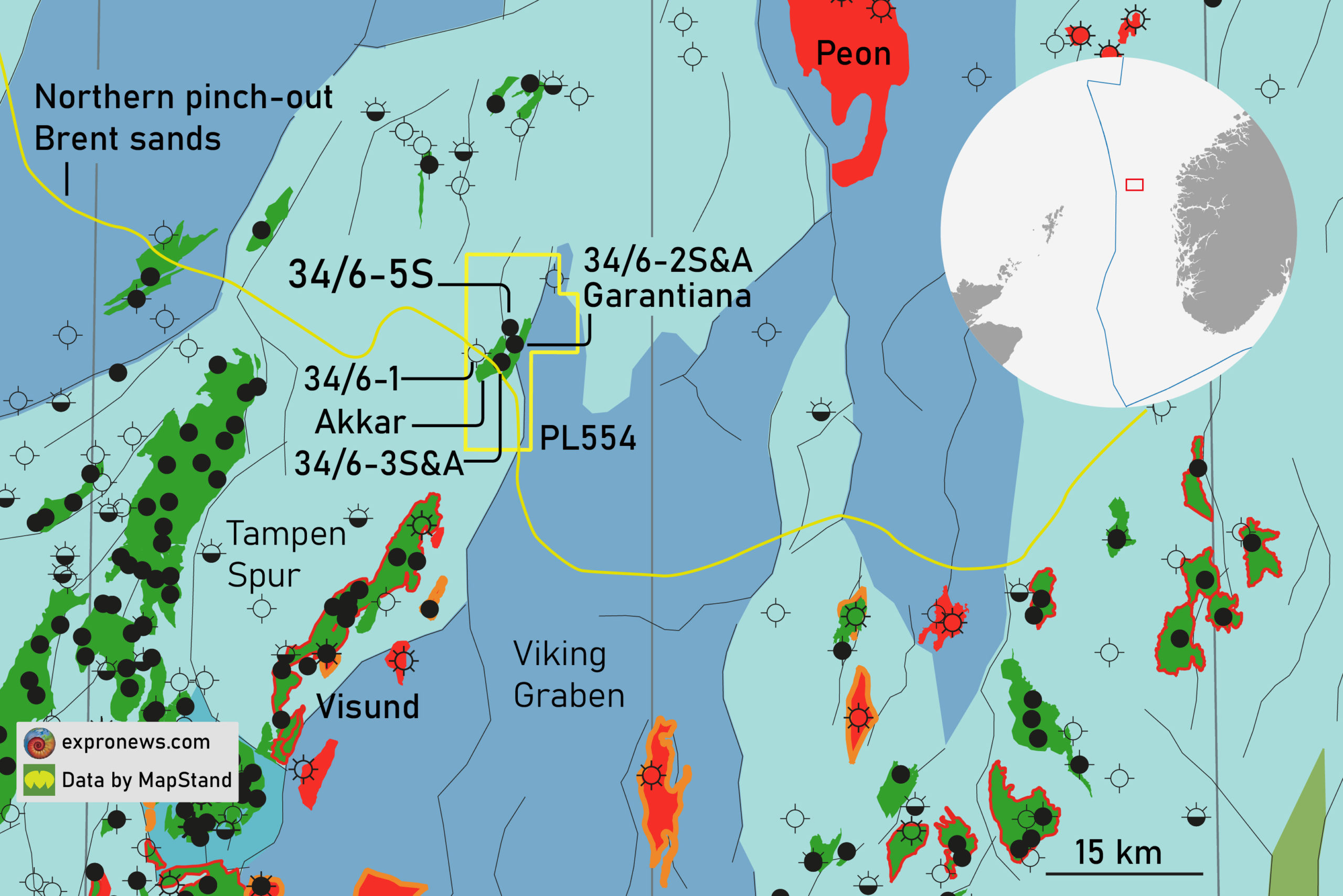Drilled just north of the pinch-out line of the Middle Jurassic Brent sandstones, the targets of well 34/6-5 S were Lower Jurassic sandstones of both the Cook and Nansen formations on the northeast extension of the Tampen Spur in the Northern North Sea.
As we already predicted when the well was spudded, the volumes discovered are small; Equinor reports a range of 8 to 23 MMboe recoverable. However, it must be said that the Akkar discovery just to the southwest of 34/6-5S only holds an estimated 3 MMboe.
The 86 m oil column now proven in 34/6-5 S – which needed to be side-tracked due to technical problems – sits in Cook Fm sandstones, whilst the underlying Nansen reservoir turned out water wet.
Low risk
Migris – the company that specialises in modelling hydrocarbon generation and migration, earmarked the 34/6-5S well as having an 98% probability of having experienced oil charge, suggesting that charge was not one of the main risks.
A short history of exploration in the local area
The first attempt to prove hydrocarbons in the area was in 2002 when Conoco drilled 34/6-1S a little to the west of the later Akkar discovery. This well turned out to be dry.
Garantiana
Total returned to the area ten years later, in times of high oil prices, and drilled 34/6-2S&A (Garantiana). The French encountered a 100 m oil column in Cook Fm sandstones, but the secondary Upper Triassic target was water wet. Production rate was 5000 barrels of oil per day through a 28/64-inch nozzle opening.
Two years later, Total further appraised the Garantiana discovery through drilling 34/6-3S and this time found a 120 m gross oil column in the Cook Formation. Again, the underlying secondary targets were dry. Garantiana is now estimated to contain about 63 MMboe recoverable. The side track (34/6-3A) then drilled towards the northwest proved another oil accumulation in the Cook Formation, a 12 m column named Akkar, with recoverable reserves estimated to be 3 MMboe, as mentioned above.
HENK KOMBRINK
The Brent sand pinch-out line was derived from Skarpeid et al. (2018).




